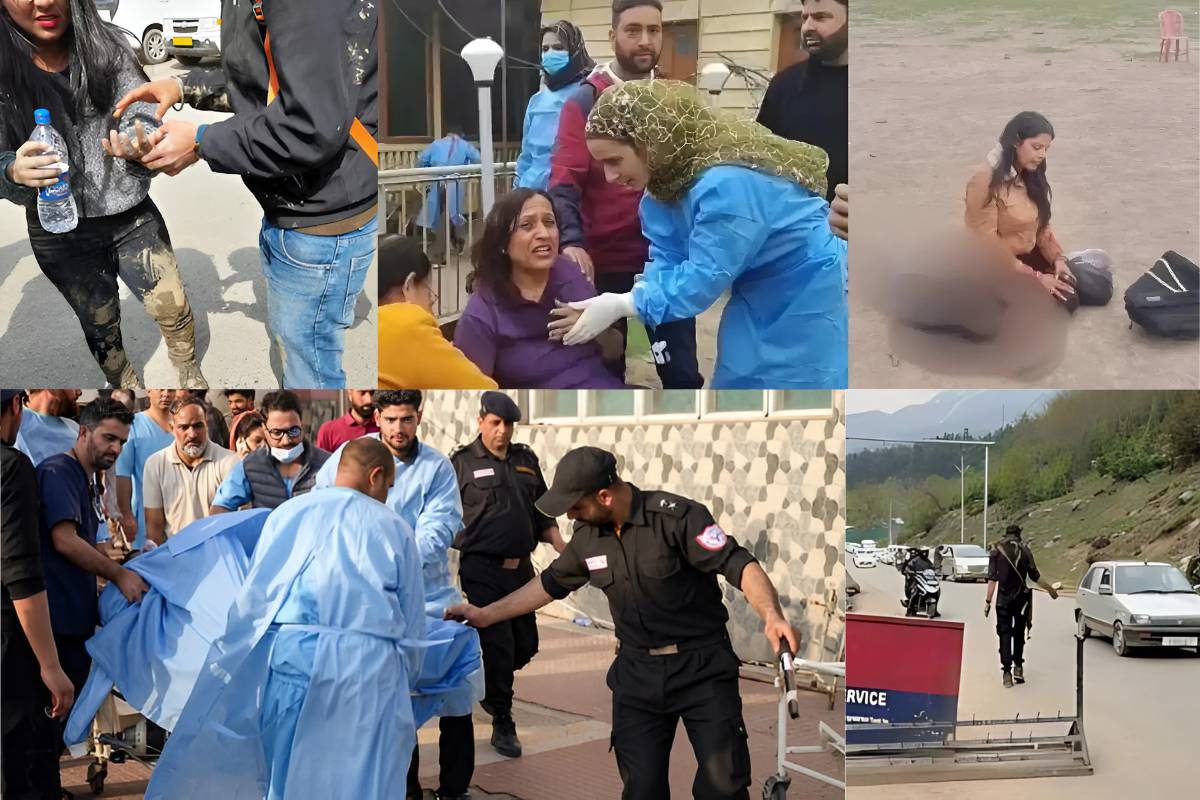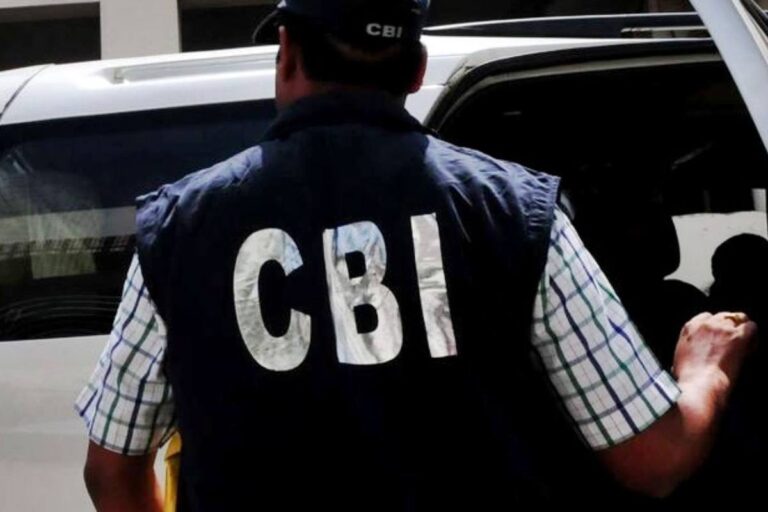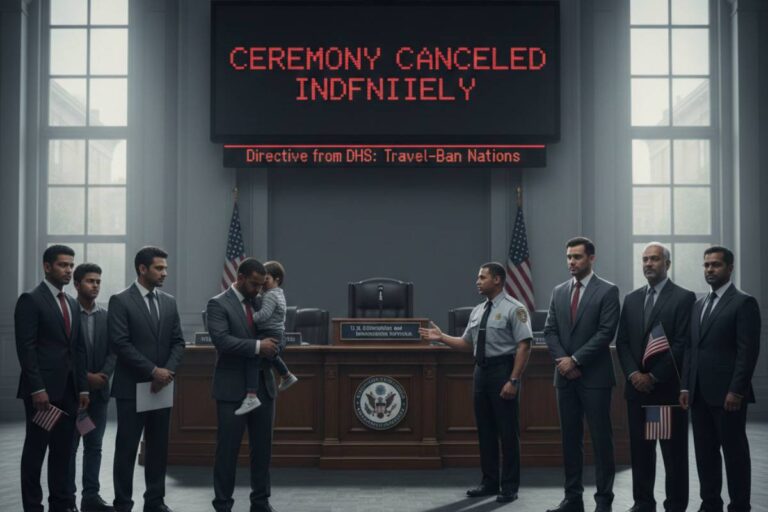April 22, 2025. A very sad day in a very beautiful place called Baisaran near Pahalgam in Kashmir. Pahalgam Terrorist Attack on Tourists caused at least 26 people to be killed, and many more were injured. This is a big deal because tourists in this area have never been attacked before. People all over the world are sad and worried about how safe the valley is.
The Attack in Baisaran
Baisaran is a wonderful place, like a mini Switzerland with green fields and snow mountains. Many tourists come here to relax and see the views. You can only reach Baisaran by walking or by pony. This made it difficult for help to reach the place quickly after the attack. The attack happened around 3 pm on Tuesday, when many people would have been there, as the weather was good. Since ambulances were difficult to reach the place, locals helped by carrying the injured in their own cars and on makeshift beds. This delay made things worse for the injured, and people wondered if there was enough security in such a popular but far-off place.
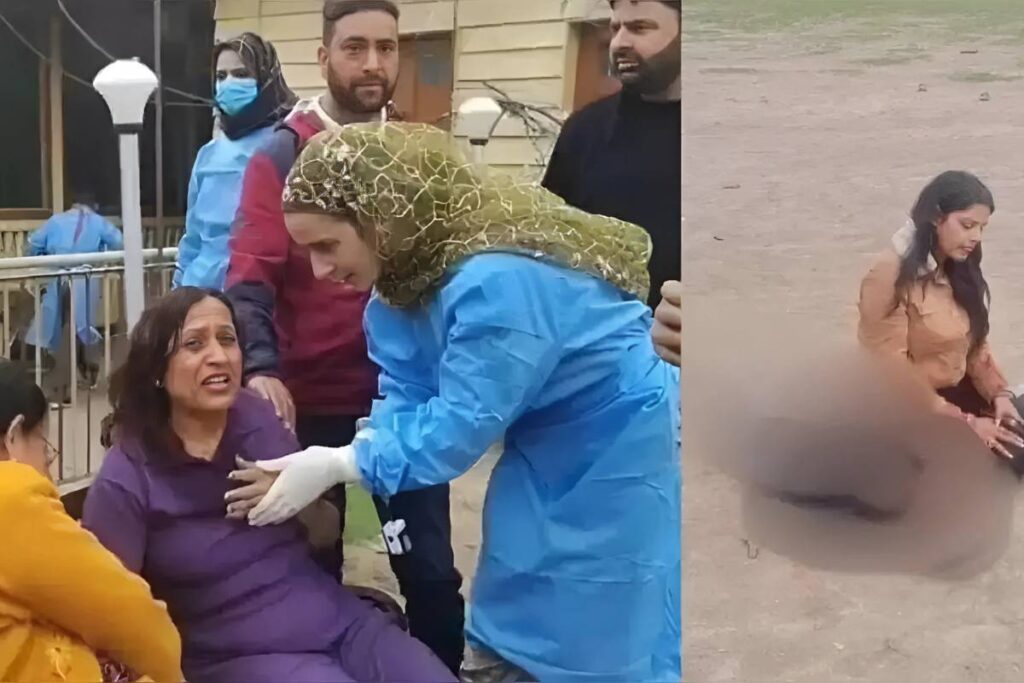
The Shooting Starts
Witnesses and police say that two to four gunmen suddenly started shooting at a big group of tourists. The shooting was very close, which made it more deadly. This looks like a planned attack to hurt as many people as possible. The fact that they shot from so close shows they wanted to kill, not just scare people. This might mean the militants have changed their plans.
Right After: Confusion and Injuries
Right after the shooting, Baisaran was full of chaos. At first, it was reported that at least 20 people died, but sadly, this number went up to 26 and then 28. About three dozen more people were hurt, and many were in very bad condition. People were very scared and tried to run away. Local people and the police quickly started helping the injured, using ponies and helicopters to take them to hospitals. So many people getting hurt in a place that was thought to be safe for tourists shows a big problem with security or that the bad people wanted to attack this group. Even though there are security checkpoints in the area, this big tragedy in a popular spot suggests that either the police didn’t know about the attack beforehand, or they couldn’t stop it from happening.
Who They Chose to Kill: Was it Planned?
At First: Did They Shoot Everyone or Just Some?
When the attack first happened, it seemed like the gunmen were just shooting at everyone in Baisaran. But as people who saw it told their stories, it started to look like they were choosing who to shoot. This makes us wonder why they did this and what their plan was.
What Witnesses Said About Who Was Chosen
Some people who lived through the attack said that the gunmen didn’t just shoot at anyone. They said the attackers had a way of picking who to shoot. These people said that at first, the attackers pretended to be policemen and asked the tourists for their names. What’s really scary is that many survivors said the militants mostly shot men but didn’t hurt women. Also, some survivors said the attackers picked out people they thought were not Muslim. They said the militants asked the victims to say the kalma, which is an important Islamic prayer, and even checked if men were circumcised to see if they were Muslim and should be spared. One survivor said that an attacker told a woman she was being let go so she could “tell the horrors” to Prime Minister Modi. The fact that they seemed to choose victims based on whether they were men and, even worse, what their religion was, suggests this wasn’t just random violence. It looks like they had a reason and a plan, maybe to make religious problems worse or to send a message. Asking for names and then choosing to shoot men and non-Muslims shows they had a plan to hurt a specific group of people as much as possible.
Identities of the Victims
The people who were killed in Pahalgam came from different parts of India, which shows how big this tragedy is for the country. Most of them were from states like Maharashtra, Karnataka, Gujarat, Kerala, Odisha, Haryana, West Bengal, and Uttar Pradesh. Sadly, two local people from Jammu and Kashmir also died, as well as two tourists from Nepal and the United Arab Emirates. It’s also very sad that a young officer in the Indian Navy, Lieutenant Vinay Narwal, who was on a short trip to Kashmir after getting married just a few days before, was killed. Someone who worked for the Intelligence Bureau was also reported to be among those who died. The fact that the victims came from so many different places shows how this terrible attack on a famous tourist spot has affected people across the nation and even in other countries. The death of a young Navy officer and an intelligence official makes us wonder if they were specifically targeted or just caught in the shooting. This is something the police will probably investigate more.
What Witnesses Saw: Stories from the Place
People Panicking and Desperate
Right after the terrorist attack in Baisaran, there was a lot of panic and desperation. People who saw it said they could hear cries for help everywhere. Women were crying and looking for their family members among the dead and injured. One woman was desperately asking for help to take the injured to the hospital, and her voice was shaking. Someone else who survived said that “those left behind were killed,” which shows how cruel the attackers were and that they wanted to kill as many people as possible. These stories from people who were there show how brutal the attack was and how much the victims and their families suffered. The fact that they shot people who were left behind suggests the terrorists were determined to cause a lot of deaths.
Sad Personal Stories
Besides the general chaos, some people who survived shared their own very sad stories about what happened in Baisaran. One woman from Karnataka said her husband was shot in the head and killed just because he wasn’t Muslim. She said the attackers asked him about his religion and even checked to see if he was Hindu before shooting him. Pallavi Rao said her husband, Manjunath, had just gone to buy snacks for their young child when they suddenly heard gunshots.
Another woman who survived said she and her husband were sitting and eating bhelpuri when a gunman suddenly picked out her husband and shot him after asking if he was Muslim. The wife of another tourist who was hurt said the terrorists asked her husband about his religion before shooting him. In the middle of all the chaos, Vinay Bai, a tourist from Gujarat, was shot in the arm as he tried to run away.
A woman from Nagpur broke her leg when she jumped off a hill with her family to escape the attack. The wife of Prasant Kumar Satpathy, a tourist from Odisha, saw her husband get shot in the head and killed. These personal stories remind us of the terrible human cost of the attack and how the attackers seemed to be deliberately targeting people based on their religion. They also show the quick and desperate actions people took to try and escape the violence.
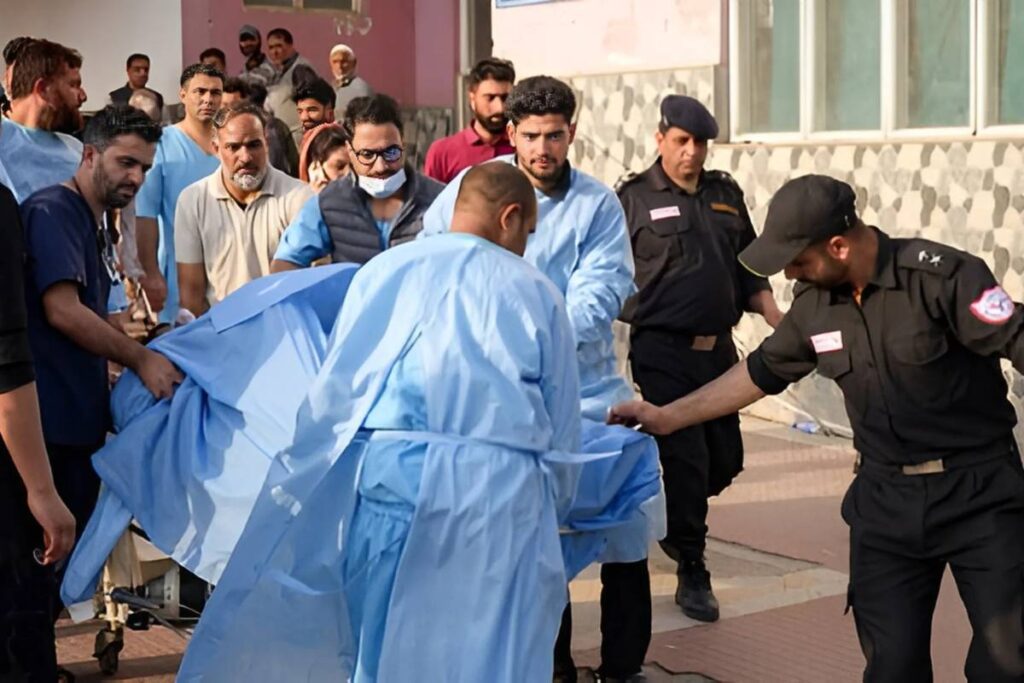
What the Government and Police Said and Did: Condemnation and Action
Immediate Strong Words
The terrorist attack in Pahalgam was quickly and strongly condemned by the top people in the Indian government and by many political leaders. Prime Minister Narendra Modi said it was a “terrible act” and promised that the people who did it would be caught and punished. The Home Minister, Amit Shah, also strongly condemned the attack and said the people responsible would face very serious consequences. The Lieutenant Governor of Jammu and Kashmir, Manoj Sinha, also said it was a “cowardly terror attack” and assured that the attackers would be brought to justice. Chief Minister Omar Abdullah said he was very shocked and sad about the attack, calling it “evil” and strongly condemning the people who did it. These quick and strong words from important government people show how serious the attack was and how much pressure there is to do something about it.
Security Steps and What Was Done
Right after the attack, the Indian Army and the Jammu & Kashmir Police started working together to search the area around Baisaran to find the terrorists. Security was increased all over Jammu and Kashmir, especially in places where tourists go and at border checkpoints, to stop any more attacks and to make people feel safer. Because the situation was so serious, Home Minister Amit Shah went to Srinagar to see what was happening and had a meeting with top officials, including the Lieutenant Governor and senior police officers. Prime Minister Modi also came back to Delhi from his trip to Saudi Arabia earlier than planned so he could directly oversee what the government was doing in response to the attack. To help tourists who needed information or help after the attack, a help desk was set up in Anantnag that was open 24 hours a day, and they gave out phone numbers for people to call.
Helping the Victims and Their Families
The government, both at the national and local levels, promised to give all the help they could to the people who were hurt in the attack and to their families who were grieving. Some state governments, like those in Maharashtra and Karnataka, said they would take special steps to help the victims from their states, including giving money and arranging to bring back the bodies of those who died. Because tourists in the area were upset, two big airlines, Air India and IndiGo, said they would let people change or cancel their flights to and from Srinagar without extra charges, which gave people more flexibility with their travel plans. These efforts to help the victims and their families show how concerned the country is and how committed they are to easing the pain caused by this tragedy.
Who Did It and Why: Trying to Understand
Blaming Anti-India Militants
Right after the attack, the police said that militants who have been fighting against India’s rule in the area were responsible for the violence. This first thought pointed to groups that have been trying to fight India’s control over the Kashmir Valley for a long time.
The Resistance Front (TRF) Says They Did It
Later, a group called The Resistance Front (TRF) said they were behind the attack. This group is thought to be connected to Lashkar-e-Taiba (LeT), a terrorist group from Pakistan that is banned. However, the government hasn’t officially confirmed this yet. The TRF is a newer militant group that appeared after August 2019 and is believed to be a way for Lashkar-e-Taiba to operate in Kashmir with a local name.
Why Would They Attack Tourists?
The decision to attack tourists in such a brutal way seems to be a worrying change in how militant groups in the area operate, as tourists had mostly been safe from direct attacks before. One reason could be to stop more tourists from coming to Kashmir. The Indian government has been trying to encourage tourism to show that things are getting back to normal in the valley. The attack happened just before the Amarnath Yatra, a big Hindu pilgrimage that brings many people to the area, so the militants might have wanted to scare people and stop them from coming. Experts think this attack might show that the militant groups are desperate because there hasn’t been as much violence lately, and things have been looking more normal. Also, the attack happened when US Vice President JD Vance was visiting India and Prime Minister Modi was in Saudi Arabia, so it could be a way for the militants to get more attention for the Kashmir issue around the world. When the TRF said they were responsible, they said it was because India had allowed over 85,000 “outsiders” to settle in the area, which they said was changing the population. So, it looks like there could be many reasons why they targeted tourists, including trying to make Kashmir look unsafe, hurting the tourism business, possibly causing religious problems, and trying to get the world to pay attention to the Kashmir conflict.
International Reactions and Condemnations
Strong Words from Leaders Around the World
The terrible terrorist attack in Pahalgam made leaders from all over the world very sad and angry. US President Donald Trump said the attack was terrible and promised that the United States would fully support India in its fight against terrorism. US Vice President JD Vance, who was in India at the time, also said the attack was “devastating” and sent his deepest sympathies to the victims and their families. Russian President Vladimir Putin sent his condolences to India and strongly condemned the “brutal crime,” saying there’s no excuse for such acts. Many other leaders around the world also condemned the attack, including the Prime Minister of Italy, Giorgia Meloni, the Prime Minister of the United Kingdom, Keir Starmer, the Chancellor of Germany, Olaf Scholz, and the President of Sri Lanka. The United Arab Emirates also strongly condemned the terrorist act and said they are against all forms of violence and terrorism. This widespread condemnation from around the world shows that the international community agrees that terrorism is wrong and that they stand with India against it.
What the United Nations Said
The United Nations also strongly condemned the terrorist attack in Pahalgam. UN Secretary-General Antonio Guterres said clearly that “attacks against civilians are not acceptable in any situation,” emphasizing that such violence goes against basic human rights and international laws. The UN’s condemnation supports the global idea that it’s wrong to target civilians in conflicts and terrorist acts, highlighting that everyone agrees civilian lives are important and that those who do such attacks should be held responsible.
Impact and Implications of the Attack: Beyond the Immediate Tragedy
A Change in Who They Target
The terrorist attack in Pahalgam is a big and worrying change in how militant groups in Kashmir are acting. For a long time, tourists visiting the beautiful valley had mostly been safe from the violence that has been happening in the area for many years. But this recent attack suggests they might have changed their strategy, which could mean a new and dangerous time in the conflict or that the militant groups are feeling desperate. This shift towards attacking tourists could have a big impact on how safe people feel in Kashmir and how safe tourists think it is to visit.
How This Hurts Tourism in Kashmir
This terrible attack is likely to really hurt the tourism business in Kashmir, which had been doing better recently with more and more people visiting. After the attack, many tourists reportedly decided to cancel their trips to the valley because they were scared. This is especially bad timing because it happened just before the Amarnath Yatra, a major religious trip for Hindus, which might make pilgrims not want to go this year. Local people who depend on tourists for their living are very worried about the long-term effects of this violence on their businesses. The fear and uncertainty caused by the attack will probably affect all parts of the tourism industry in Kashmir, including hotels, travel companies, local shops, and the overall economy of the region.
The Attack and the Bigger Conflict in Kashmir
The Pahalgam terrorist attack needs to be seen as part of the bigger conflict in Kashmir, where there are still tensions and fighting. The attack also happened at a time when Pakistan has been talking more about the Kashmir issue. Sadly, this was the deadliest attack on civilians in the Kashmir Valley since the Indian government changed the special status of Jammu and Kashmir in August 2019. This brutal act of violence reminds us that the region is still unstable and that terrorism is still a threat, even though the government has been trying to show that things are normal and peaceful. The attack shows that the problems causing the Kashmir conflict haven’t gone away, and that militant groups can still carry out big and deadly attacks.
In Conclusion
The brutal terrorist attack in Pahalgam on April 22, 2025, signifies a deeply disturbing escalation in the Kashmir conflict. The calculated targeting of unarmed tourists, the high number of casualties, and the apparent sectarian motive have reverberated across India and the international community. While the government has pledged to bring the perpetrators to justice and has initiated immediate security measures, the long-term ramifications for the region’s tourism sector and overall security remain uncertain. This tragic event underscores the persistent challenges in achieving lasting peace and stability in the Kashmir Valley and highlights the imperative for sustained vigilance and a comprehensive strategy to effectively counter terrorism.
| Date of Attack | April 22, 2025 |
| Location | Baisaran Meadow, near Pahalgam, Jammu and Kashmir |
| Number of Deaths | At least 26 |
| Number of Injured | At least 36 |
| Perpetrator (Claimed) | The Resistance Front (TRF) |
| Likely Motives | Deter Amarnath Yatra pilgrims, gain international attention, response to perceived demographic changes |
| Key Government Responses | Launch of search operations, high-level security meetings, PM’s return from Saudi Arabia, support for victims |








